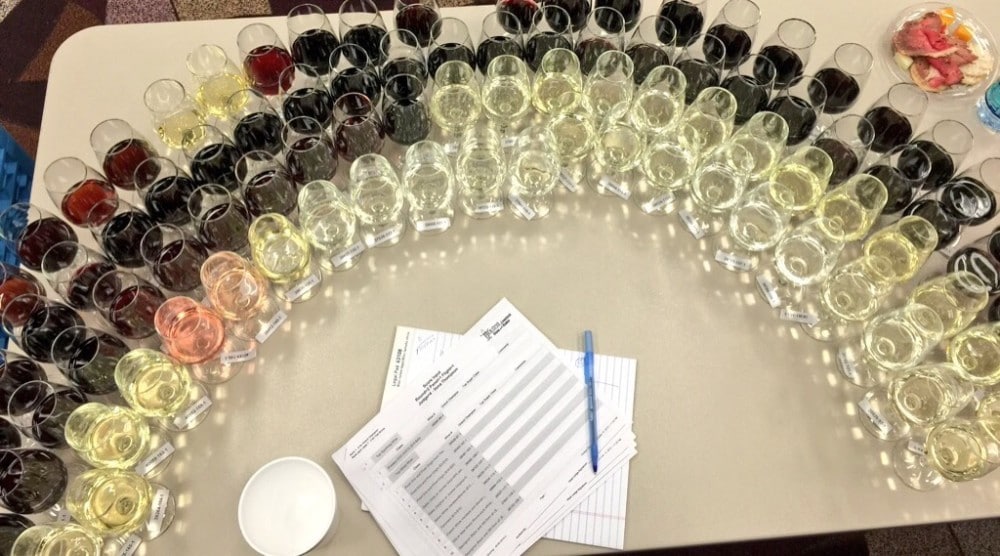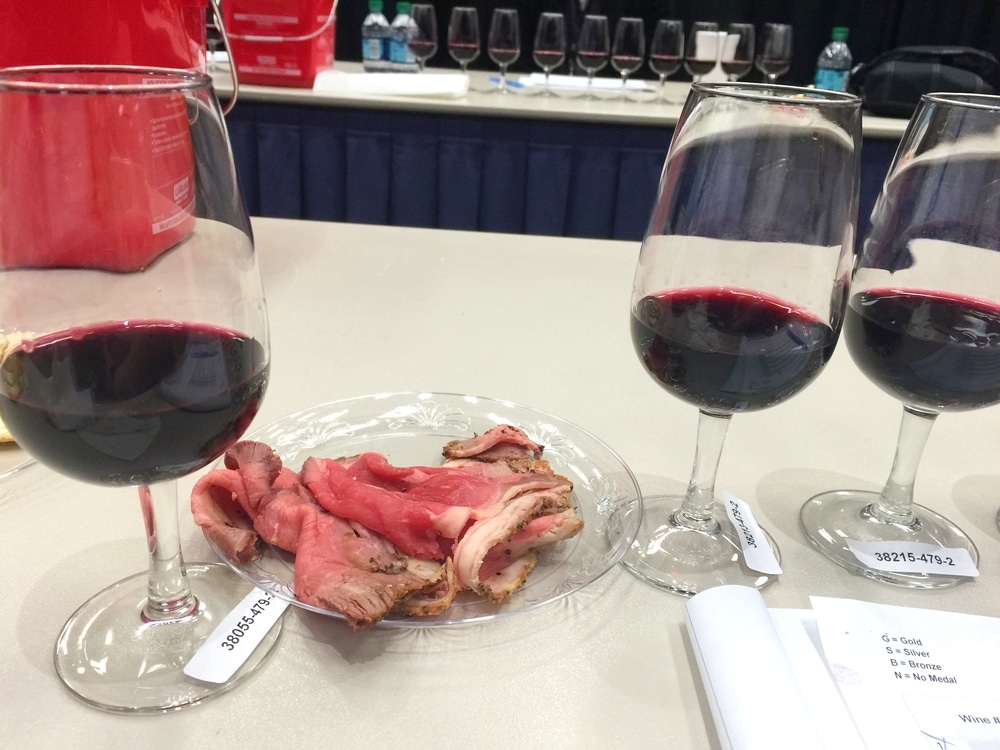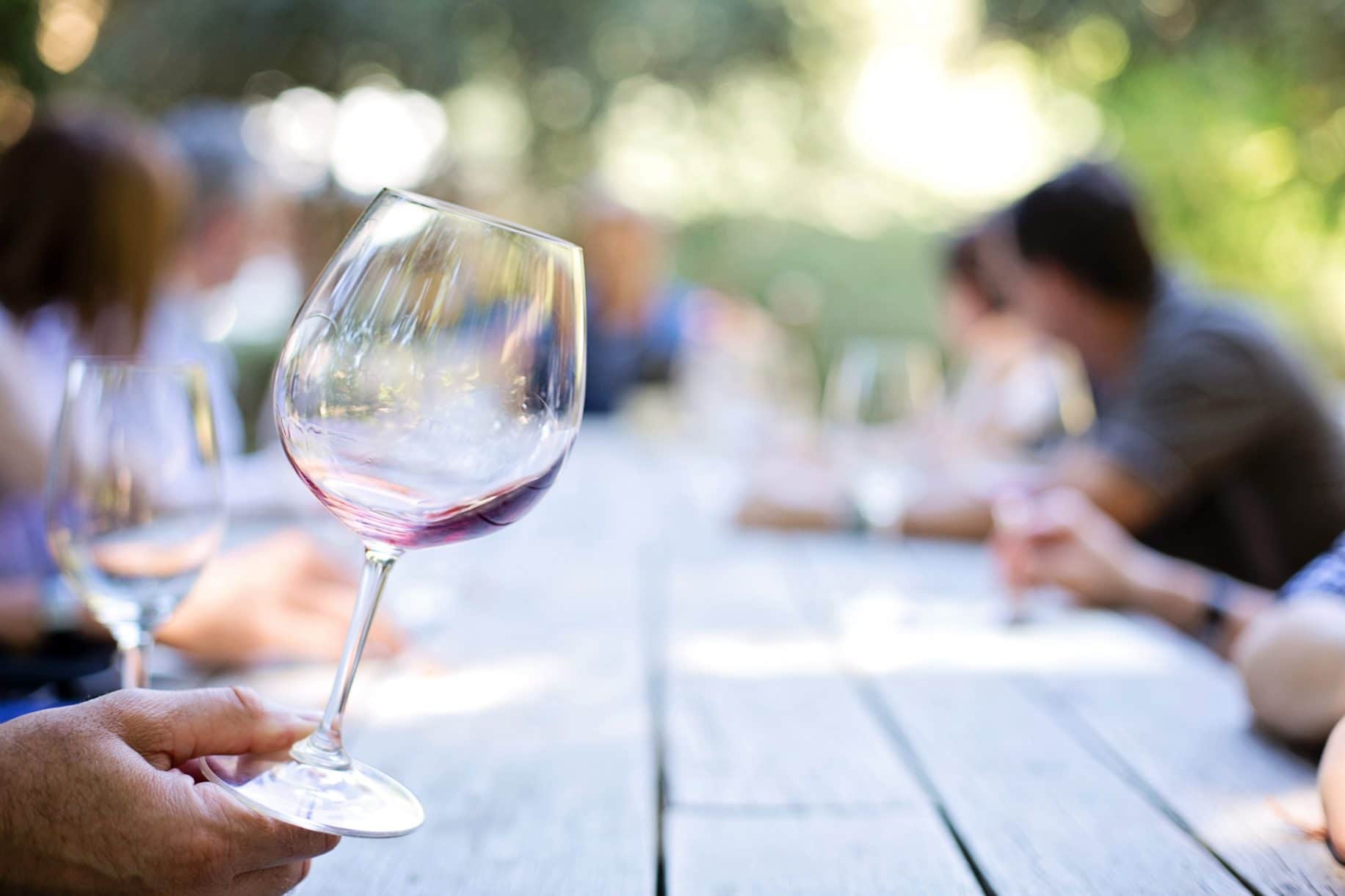Recently, I had an opportunity to judge at a large-scale blind wine tasting competition. I have participated and conducted hundreds of wine tastings for innumerable years, many in blind format. It was a rewarding experience, followed by some introspection.
This holiday season, many of you will be spending time with family and friends, popping corks and mixing drinks. It’s a special time of year, when many of us relax and rejoice in what we have. Wine is a terrific partner in this celebration of life. (And frankly, in all of life’s adventures, good or bad.)
If you are a seasoned taster, would like a few tools in your arsenal, or have lots of ambitious plans to host wine groups, here are some thoughts.
For years I’ve asked myself, “What does it really mean to judge a wine?” After all, wine is art, and art is inherently subjective. Wine valuation is a fascinating process, with a myriad of variables. The internal bias is a constant. The difference between someone who tastes wines weekly (or even daily) and someone who is new to wine is experience, not quality of judgement.
The tasting environment can dramatically impact one’s impressions. Room temperature, noise level, the shape and size of the glass, what you ate for breakfast, the mood you are in, if your fellow tasters are wearing any perfume, or the temperature of the wine itself. All play a sizable role.
Blind tastings are always challenging, but invariably the most exciting and empowering in the end. I typically “nose” all the wines first. It helps me to establish an aromatic baseline. I never assume that the wine will taste like it smells—often that’s not the case. However, a great set of aromatics offers valuable insight. I realize that this is out of order, as traditionally you are supposed to take in the visual cues first, but sometimes I like to make my own rules!
Glassware is crucial. I am a bit of a rebel when it comes to proper stemware and often use glasses that are larger than recommended, (i.e. burgundy or cabernet glass for chardonnays and other white varieties). I am generally a subscriber to “the bigger, the better” ideology. I find that larger glasses give the wine more room to move and express itself without the rigorous swirling.
Swirling is always an interesting exercise. I have observed industry veterans over the years who have the most awkward-appearing swirling technique ever. I prefer to have the glass firmly planted on the table and give it a good whirl. The wine coats the glass, so when you put your nose to it, you are smelling the glycerin-y intensity. I typically tilt the glass, to get a greater share of “aromaticus maximus.”
Smelling is the lion’s share of the fun, so I do it repeatedly. I take a series of short inhales and let the aroma build an image in my brain. Does this remind me of something? Our subconscious is a pretty astonishing asset: the memories that file away, unnoticed, can be powerful assets. Sifting through hundreds of variables in aroma components can be a tedious task, unless you are connected to your instincts and trust initial impressions.
One of the typical taster tools is elimination of wines with obvious aromatic flaws before moving on to final assessments:
- Brett or Brettanomyces, a rather yeasty beast that reeks of sweat and leathery musk. Some actually like moderate amounts of it, and claim that it’s an earthy, savory scent. (I’m ultrasensitive to it, and don’t enjoy any, however miniscule.)
- Cork taint is pretty obvious. Wines that suffer from this flaw smell musty and lack flavor.
- Common offender is “V.A.,” or volatile acidity. Wines that show this flaw smell like vinegar or industrial cleaner.
I am a fruit junkie. There is no substitute for a seductive fruit bouquet. I never quite understood why fleshy, pungent, “barnyard-esque” aromatics are somehow prized characters. Last I checked, grapes are fruit, so I prefer for it to smell and taste accordingly.
Not to minimize the lovely floral fragrances or herbal hints, such as Herbs du Provence, those could be awesome companions of a great spectrum of aromatics. Earthy components can be loads of sensory fun, especially in varieties such as Pinot Noir. I love the wet soil, mushroom-y scents of a great Burgundy.
Perhaps the greatest controversy in the wine appraisal world is the prominence of oak. It has a broad range, both aromatically and taste-wise. If something smells like cloyingly sweet vanilla and lands on the palate with a thud, it almost always means a heavy-handed use of new wood.
Oak can be a great thing, if applied judiciously and paired well with a given grape/vineyard. It can give off hints of smoke, subtle vanilla overtones, coffee or nutty characteristics. If used wisely, it can greatly enhance the wine’s natural flavors by framing them.
Visual evaluation is also significant, color is an important factor and a great ally. It helps identify or validate the varietal and often indicates the wine’s possible age. If it’s cloudy or murky it may simply mean “unfiltered,” or may point to some grave flaws, such as unresolved fermentation issues. Holding a glass up to the natural light or placing it against a spotless white surface may provide valuable clues as to what it’s secrets are.
Tasting dozens of wines in a row is always challenging. Whether it’s a walk around tasting or a sit-down focused exercise, at some point palate fatigue sets in. It happens all too often, way before you are ready, your main instrument shuts down and begs for mercy…so can anything be done?
There are some tricks of the trade to try and coax it into greater longevity/performance. The most common ones are cheese and crackers. Texan tasters believe that roast beef mops up the tannins. Sparkling water or light beer does a trick for some. Sadly, none of those ever did me much good. Oddly of all things, cornichons, and other pickled veggies, seem to work. The vinegary acidity fools my senses.
So, at the end of it all, after evaluating color, clarity, complexity, fortitude and breaking down all the fruit, acid and oak characteristics, we wrestle with the question: what does a good wine make?
This elusive “balance” that everyone chases, subject to incessant debates—what does that truly mean?
In my opinion, balance is harmony, a symphony of flavors and sensations. It is a cohesive interface of distinct elements, with none of the individual ones outshining the other. It has to be charismatic, yet not overstated. Distinct, yet also mysterious. Lingering, yet not overbearing.
Complexity implies evolution, with each sip delivering a nuanced, advanced performance. A good wine has a solid back bone. If it lacks vibrancy and falls apart on the palate, it is almost always an indication of the absence of acidity and structure.
Wine’s finish is my consummate deal breaker. A short finish will never fully engage. One fun exercise, especially in a group setting, is to set a timer and count the seconds while the finish lasts. Obviously, you might want to do it with the wines that will likely deliver a long one.
Essentially, wine is a story, with intriguing beginning, major middle and lingering, satiating end. A great wine will leave you wanting more, so the most important criteria in the end is: do I want another sip?
Should you be engaged in a solo exercise, or surround yourself with friends, your faithful wine companion is always there with a story to tell. Some so compelling, it keeps our attention long after the glasses are empty.
After years of listening to wine, my philosophy can be summed up by this:
Wine, unlike all other liquid refreshments, comes from a place of continuity. The vines may have been planted long before we were born, and many may well outlive us. The myriad of sets of hands that touched the vines, from nurseries, to farm workers, to vintners and viticulturalists, to winemakers and finally, you, in its final form, creates a sense of awe. It’s deeply humbling to know that you are a part of a continuum, a process that originates with a human hand and finishes with a human mind. The passions, that good wine has the capacity to evoke, are unsurpassed.
Great wine is the only beverage that mimics the human life cycle, with its sometimes awkward beginnings, frequent teenage struggles, coming into your own and the inevitable decline. Catch it at any moment in time and it will reward you with tales of overwhelming glory or colossal sadness. I have heard a few, and many exist in me as I write this.
Wine helps us connect to ourselves and each other. It is also—simultaneously and unequivocally—tons of fun.
I can’t think of a better reason to celebrate.







You must be logged in to post a comment.